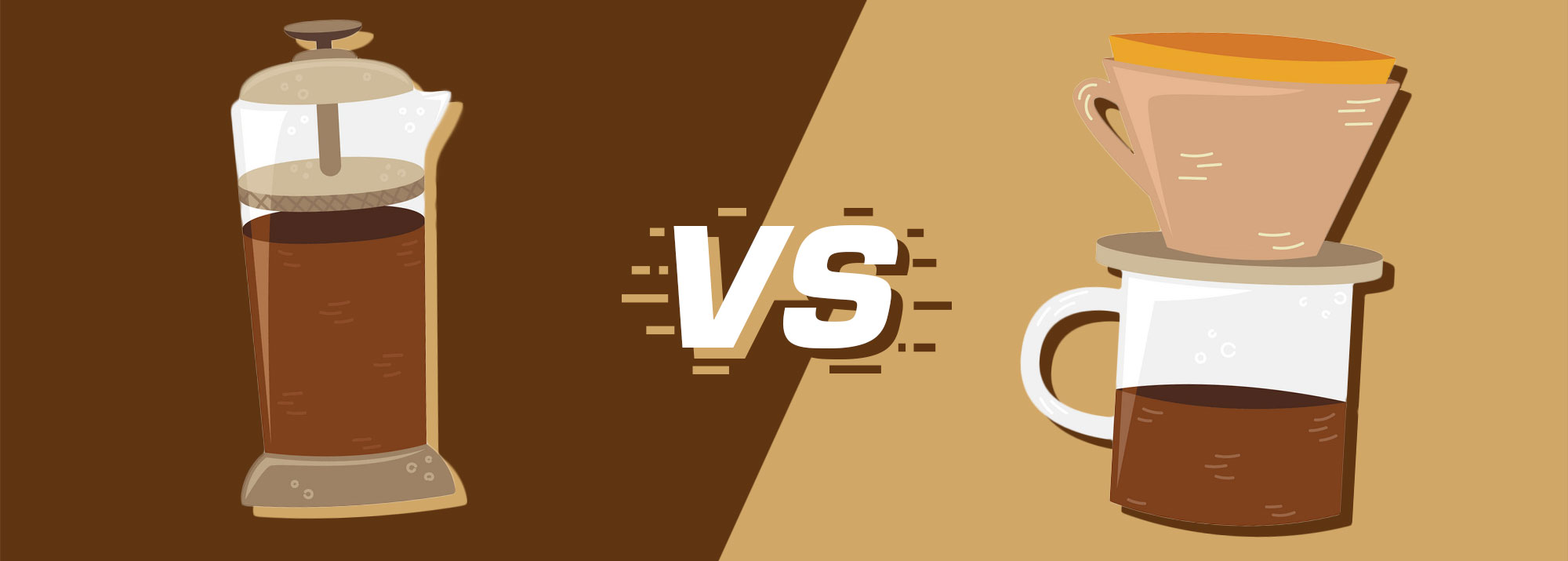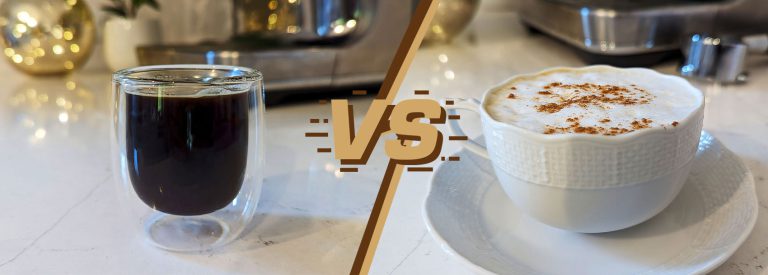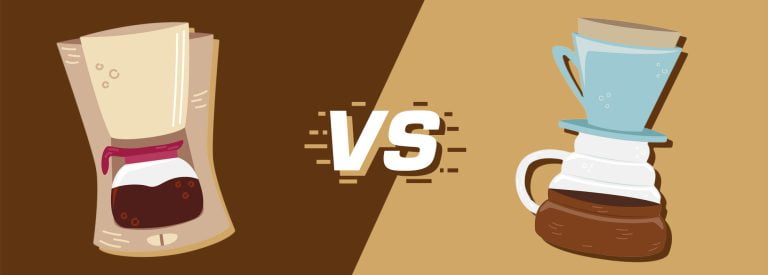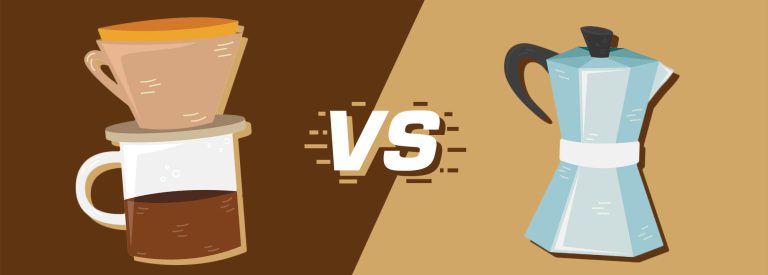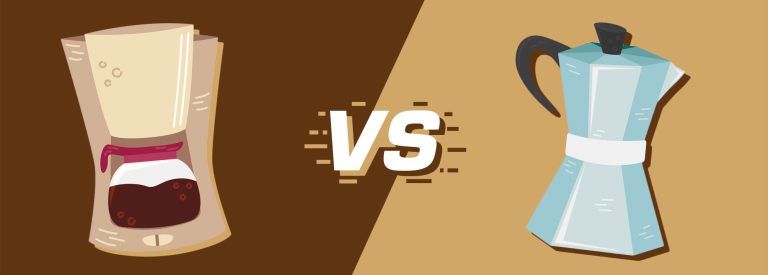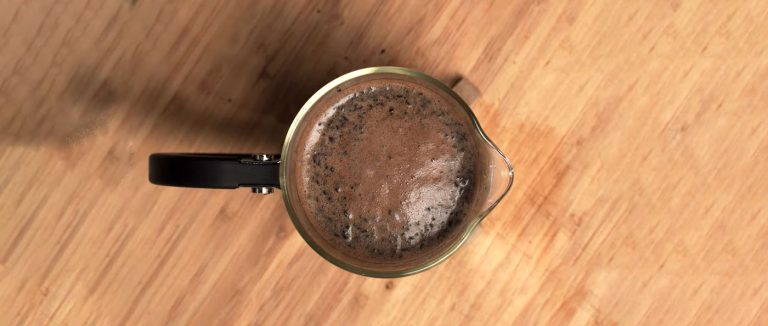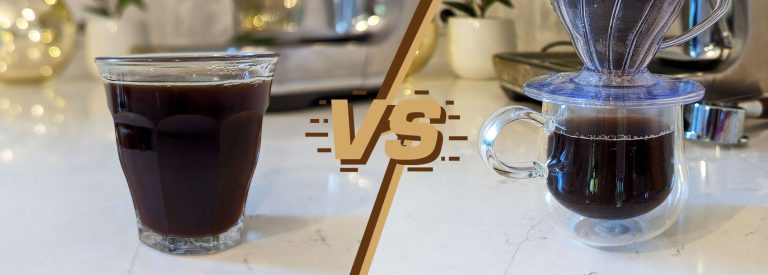French Press vs Pour Over: The Battle of the Best Brews (Barista’s Verdict)
Whenever friends ask me for manual brewers I’d recommend, the French press and pour-over methods are high on my list. But then I often get asked next, which of these two is better?
Both French press and pour over have taken the specialty coffee world by storm, each with its own unique approach to extracting flavors from our favorite beans.
In this article, I’ll extract some of the most important features of both brewing methods and compare them side by side. By the end of it, you will be able to make an educated decision on whether French press or pour over is better suited for you.
Comparing French Press & Pour Over – Which Method is Better?
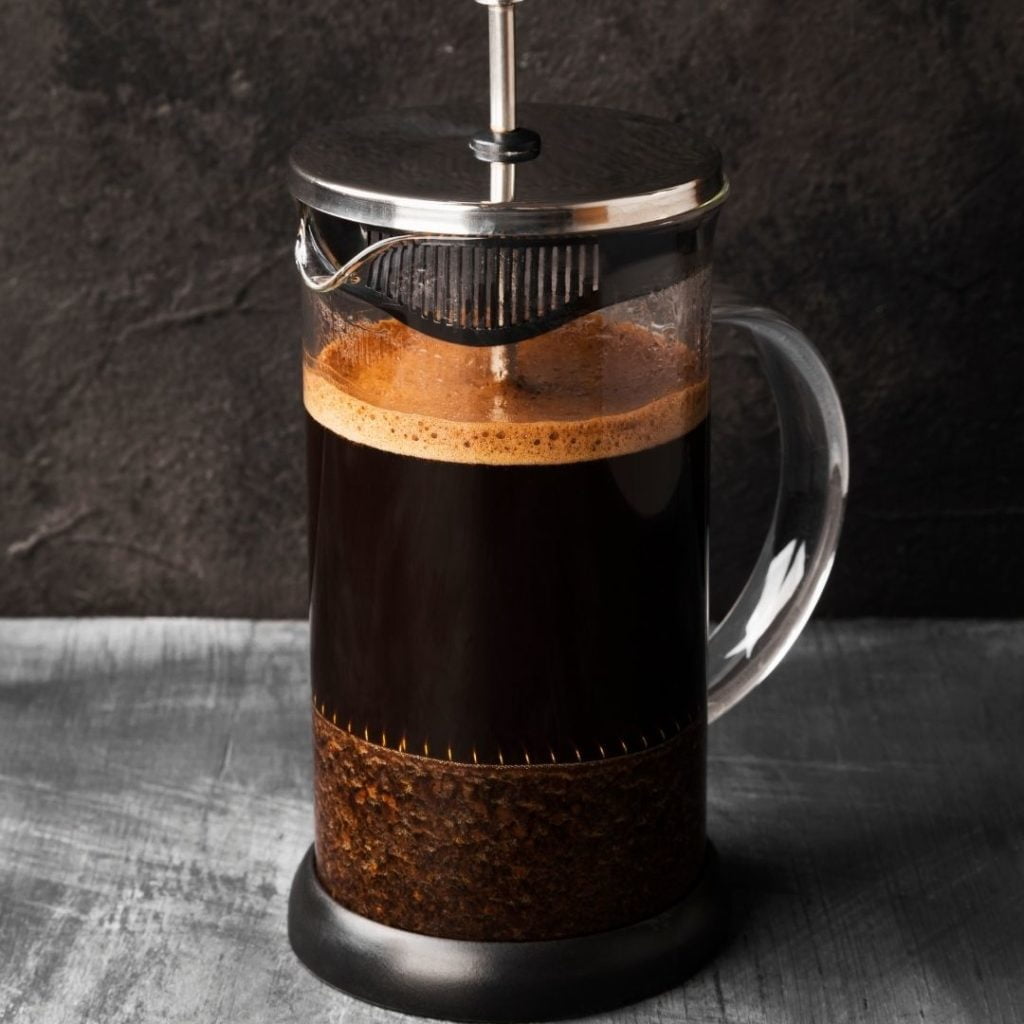
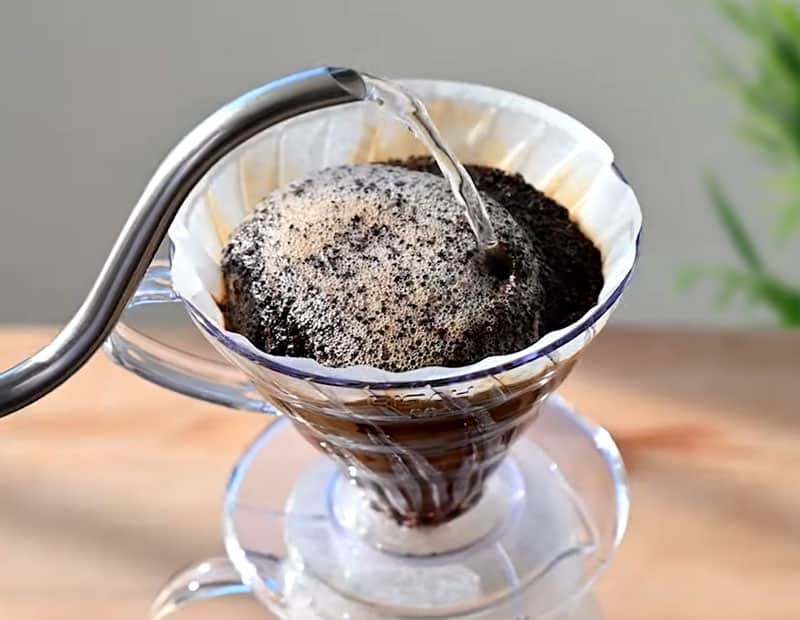
The French Press offers a straightforward yet effective method that involves immersion brewing. The process begins with the ground coffee beans placed at the bottom of a cylindrical glass or stainless steel container. Hot water is then poured over the grounds and allowed to steep for several minutes before being pressed through a mesh screen using a plunger.
The result is a full-bodied cup of coffee that retains its natural oils and flavors.
On the other hand, Pour Over coffee requires a more hands-on approach but results in an equally delicious brew. With this manual brewing method, hot water is slowly and steadily poured over finely ground coffee beans, ensuring even saturation and optimal flavor extraction.
Coffee connoisseurs appreciate pour-over brewers’ precision and control, which produces a clean and crisp cup of coffee. With various pour-over devices available such as the Chemex, Hario V60, and Kalita Wave, you can experiment with different brewing techniques to achieve their desired taste.
Here are the factors to consider when picking between the two brewing methods, followed by a detailed comparison of each feature.
| Features | French Press | Coffee Pods |
|---|---|---|
| Taste & Flavor | Full-bodied, robust flavors | Varied depending on blend |
| Strength | Intense | Varies depending on blend |
| Ease of Use | Relatively simple | Simple |
| Brewing Speed | 6-7 minutes | 5-7 minutes |
| Versatility | Limited control | More customization options |
| Durability & Portability | Fragile glass, steel options | Lightweight and sturdy |
| Sustainability | More sustainable | Paper filters may produce waste |
| Cost | $20-$100 | $5-$50 (plus cost of filters) |
Taste, Flavor, & Strength
Pour over coffee is made by pouring hot water over coffee grounds that are held in a paper filter. The water passes through the filter and into a pot or carafe below, resulting in a clean and clear cup of coffee with complex flavors. Because of its light body and intricate flavor profiles, pour over can be an excellent choice for those who prefer light to medium roasts, but I don’t recommend it for dark-roast lovers.
On the other hand, French press produces a full-bodied coffee with robust flavors. The immersion brewing method allows all the coffee oils to remain in the brew, giving it a heavy body and bold taste. Due to this brewing method, French press typically has more intense strength than pour over.
When it comes to personal preference, there’s no right or wrong answer – it ultimately comes down to what you enjoy most. I personally find myself leaning towards French press because I always crave a strong pick-me-up in the morning. But during quiet Sundays when I want something more delicate and nuanced, I’ll opt for pour over.
Ease of Use
Regarding how easy each brewing method is to use, the French Press and Pour Over each have their own set of factors to consider.
You can’t go wrong with the French Press’ relatively simple brewing process. All you need is medium-coarse to coarse grinds, and hot water at 195°F to 205°F (91°C to 96°C). Once all these are in place inside your brewer, push down the plunger once your coffee has steeped for around four minutes. Just pour your coffee and you’re done.
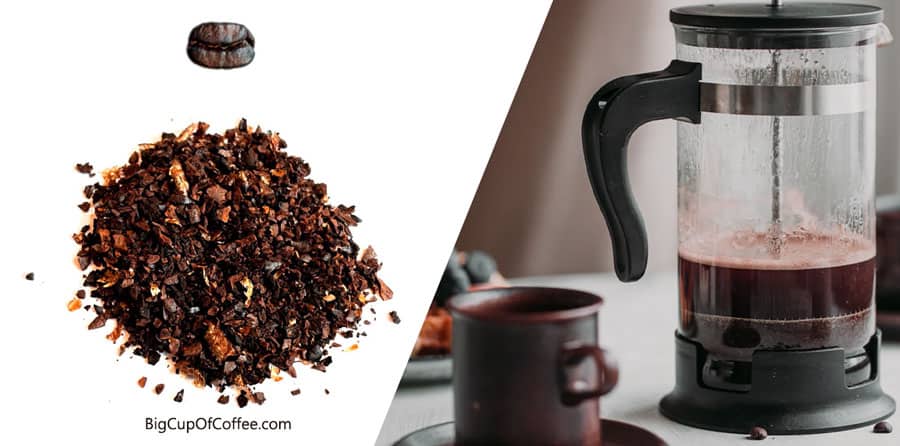
On the other hand, using a pour over requires some practice before getting it right. You’ll need a filter, medium to medium-fine grind size coffee beans, and water at the same temperature range as the French Press. However, it is the pouring timing and technique using a gooseneck kettle that will need some learning curve, but once you’re past that, this brewing method is not really too difficult.

After considering all these factors, it’s clear that the French Press wins in terms of ease of use.
Brewing Speed
Now onto the brewing speed. With the French Press, you’ll need approximately 6 to 7 minutes from grinding your coffee beans up to cleaning everything up. Meanwhile, making pour over coffee can be a bit faster at around 5 to 7 minutes in total.
What makes the difference is that you need to preheat your French press before combining the coffee grounds and water and then you wait for another 4-8 minutes before plunging. While this allows for more oils to get into your coffee, it can also bring some unwanted sediments to your cup.
As for the pour over method, it varies depending on your brewer but it does require some blooming – meaning you wet the coffee bed and wait for about 30 seconds before pouring the rest of the hot water. This allows for more aromatic oils and flavor to reach your cup.
Cleaning-wise, the pour over methods are simpler to clean up, you basically dispose of the grinds and quickly rinse the drippers. Unless you’re using and cleaning a Chemex, which requires more effort because its carafe and dripper are fixed in one body.
With the French Press, disassembling and scrubbing out grounds can be challenging; however, on an overall scale, it isn’t too difficult or overly tedious.
But overall, the pour over has the upper hand due to its faster total brewing time and easier cleanup.
Versatility
Your brewing method’s versatility is important because it allows you to make different types of coffee beverages using the same equipment.
With the French press, there isn’t much versatility as you can only make a single type of hot coffee beverage. You can also use a French press to make cold brew coffee, but that’s about it.
Pour over brewing methods offer some degree of control over the brewing process. You can adjust your water temperature, coffee-to-water ratio, and grind size just like with the French press, and also the flow rate, which means you have a bit more control to customize your brew.
When it comes to flexibility in capacity, the French press comes in a variety of sizes to cater to different needs:
- 3-cup (0.35 L)
- 4-cup (0.5 L)
- 8-cup (1 L)
- 12-cup (1.5 L)

Pour over’s sizes differ depending on the brewing device you’re using. For example, the Chemex is one of the most flexible options with four sizes available, while the Hario V60 has 3 dripper sizes.
Overall, while both brewers have decent size choices, the pour-over wins the versatility contest against the French press. While it typically requires a bit more hands-on approach, it allows you to control more aspects of your brew.
Durability and Portability
When it comes to durability and portability, the French Press and pour over are about equal.
The classic glass models of a French press can be fragile which means that you need to handle them with care, while stainless steel versions are more durable and easier to take on the go.
Pour over brewers also use different materials that make them generally lightweight yet sturdy, with the exception of the Chemex which is known for its consistent glass build with a wooden collar. The Hario V60, as a perfect example, has five material options you can choose from:
- Glass
- Metal
- Copper
- Plastic
- Ceramic
As for portability, while French press is made portable thanks to its compact design, pour over tools like the Kalita and Hario drippers win this one. Drippers can be as small as 8.2 cm in height while a 3-cup French press typically has a 13 cm height.
Personally, I like using French press more because while pour over drippers are smaller, the steel French press is more convenient to brew in whenever I’m outdoors. I remember bringing my dripper to camping, but because the grass was uneven, it was a bit tricky to get the pouring technique right.
Sustainability
When it comes to French press and pour over, which one is more sustainable? Let’s compare.
With no disposable components, the French Press seems to be the more sustainable option. It eliminates any worries concerning plastic by opting for glass or stainless steel models. This means that you can enjoy your favorite cup of coffee without hurting the Earth.
Meanwhile, pour over methods use paper filters, thereby producing occasional waste. You can opt for reusable filters like metal and cloth filters though, but they alter the taste and body of your coffee. Another drawback is that some drippers also come with plastic models and components. However, given its small size and durability, large-scale ecological impacts remain less threatening.
Honestly speaking, both methods seem like good choices if you prioritize sustainability because they do not use electricity to brew. In fact, they are both some of the most eco-friendly brewers you can get.
But if we have to pick out a winner, then French press comes out on top, as it produces less waste.
Cost
When it comes to coffee-making devices, the cost is always a crucial consideration. The French press has a reasonable price range of around $20 to $100 depending on size and material. With proper care, it will last you many years without needing extensive maintenance, and there are no additional operating expenses to worry about.
On the other hand, pour over brewers are generally more affordable starting from $5 and maxing out around $50. It is worth noting though that pour over methods need paper filters which can cost you 2 to 8 cents (2025 price) every time you brew a cup. Pour overs also benefit from having a digital coffee scale and a gooseneck kettle, both of which add to your initial expenses.
If you’re looking for greater value, the French press might be better since it does not need any sort of replacement components, fill-ins, or extra accessories once purchased.
French Press and Pour Over – Weighing the Pros & Cons
Now that we’ve gotten a closer look at the features of each brewing method, here’s a quick overview of the pros and cons of French press and pour over so you can finally decide which one is for you:
| Brewing Method | Pros | Cons |
|---|---|---|
| French Press | – Easy to use – The glass material offers decent heat retention – Stainless steel models offer durability | – Some sediments may get into your drink – Common glass build is prone to breakage |
| Pour over | – Offers great control over the brewing method – Easy to produce consistent coffee – Fairly affordable | – Requires a bit of patience to brew – Glass brewers can be fragile – Needs filters which can be wasteful |
You can also read my French press comparisons to other brewers to find out which one is the best for you:
Meanwhile, here are the comparisons between pour over coffee and other brewing methods:
Conclusion
After comparing the French press and pour over, it’s clear that both brewing methods have their own advantages and drawbacks. While the pour over method ticks more boxes including versatility, brewing speed, and affordability, it’s still your choice which factors you give more importance to. If you like easier and more eco-friendly brewing without recurring costs, then the French press may be a better pick.
Personally, I prefer using pour overs because I really like to have control over my coffee’s flavor profile without getting any sediment in my cup. But hey, that’s just me.
Which one do you prefer? Let us know in the comments below.

